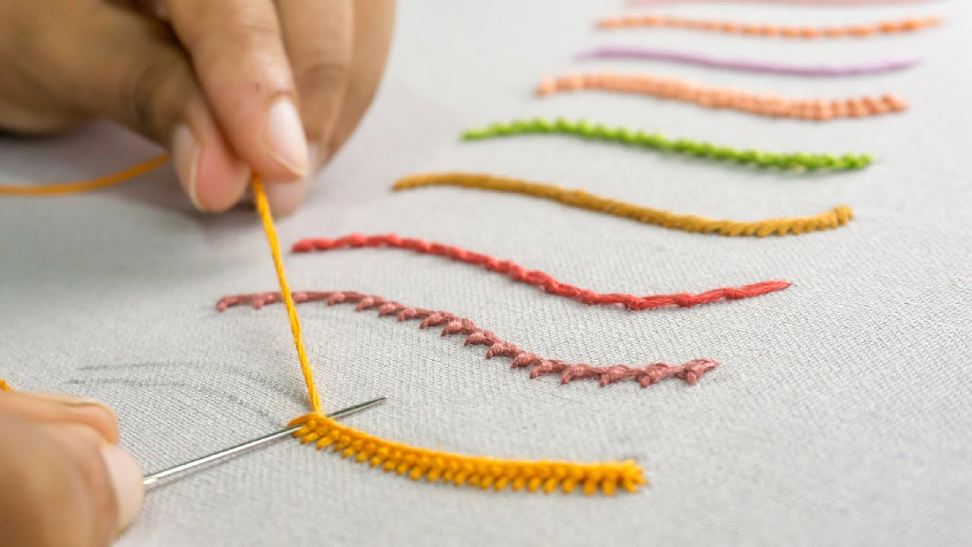Peterexch, Dhoombet, Go999exch: Embroidery is an ancient craft that dates back to as early as the Cro-Magnon era, where primitive man used rudimentary tools to sew decorative designs onto animal hides. As civilizations evolved, so did the art of embroidery, with cultures like the Egyptians, Chinese, Indians, and Persians showcasing intricate needlework on garments, tapestries, and religious artifacts.
In medieval Europe, embroidery became a symbol of wealth and social status, with nobles and royalty adorning their clothing and accessories with elaborate designs crafted by skilled artisans. During the Renaissance period, embroidery flourished with the introduction of new techniques and materials, leading to the creation of exquisite pieces that showcased both artistic talent and technical prowess.
Different Types of Embroidery Stitches
Embroidery stitches come in a wide variety, each serving a unique purpose and creating distinct textures in a design. The running stitch is one of the most basic stitches, consisting of a simple in-and-out motion that forms a dashed line or outline. Conversely, the satin stitch involves closely packed stitches that fill in a specific area, resulting in a smooth and shiny appearance.
Another popular stitch is the backstitch, characterized by its continuous and sturdy line that is often used for outlining shapes or adding finer details. On the other hand, the French knot stitch creates a raised and textured dot on the fabric, adding dimension to the design. These are just a few examples of the myriad of embroidery stitches available, each offering endless possibilities for creativity and expression in needlework.
Choosing the Right Fabric and Thread
Fun999exch, Goldbet7, Exch247: When selecting fabric and thread for your embroidery projects, it’s crucial to consider the type of design you will be creating. Making the right choice can greatly affect the outcome of your work. The fabric you choose will determine how the thread will sit on the surface, impacting the overall look and feel of the piece.
Different fabrics offer varying degrees of thickness and texture, which can influence the appearance of your embroidery. For detailed designs, finer fabrics like linen or cotton are ideal as they allow for intricate stitching. Thicker fabrics such as canvas or denim are better suited for bold, statement pieces with heavier thread. Matching the weight of the thread to the fabric is key in achieving a balanced and professional finish.
� When selecting fabric and thread for embroidery projects, consider the type of design being created
� Fabric choice impacts how thread sits on surface, affecting overall look and feel of piece
� Different fabrics offer varying degrees of thickness and texture, influencing appearance of embroidery
� Finer fabrics like linen or cotton are ideal for detailed designs allowing intricate stitching
� Thicker fabrics such as canvas or denim are better suited for bold statement pieces with heavier thread
Why is it important to choose the right fabric for embroidery?
Choosing the right fabric is important because different fabrics have different textures and weights, which can affect the way the embroidery stitches look and hold up over time.
How do I know which fabric is best for my embroidery project?
Consider the type of design you are doing and the look you want to achieve. For example, a delicate design may work best on a lightweight fabric like muslin, while a more intricate design may require a sturdier fabric like canvas.
What factors should I consider when choosing embroidery thread?
Consider the weight and type of thread, as well as the color. Some threads are better suited for certain types of stitches or fabrics, so it’s important to choose the right one for your project.
Can I use any thread for embroidery?
While you can technically use any thread for embroidery, it’s best to use threads specifically designed for the craft. These threads are more durable and come in a wider range of colors, making it easier to achieve the look you want.
How can I ensure my fabric and thread choices will work well together?
It’s a good idea to test out your fabric and thread choices on a small piece of scrap fabric before starting your project. This will help you see how the colors and textures look together, and if the thread works well with the fabric.

